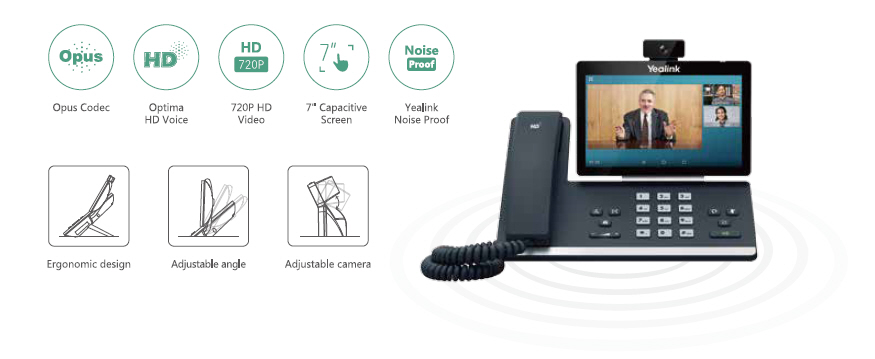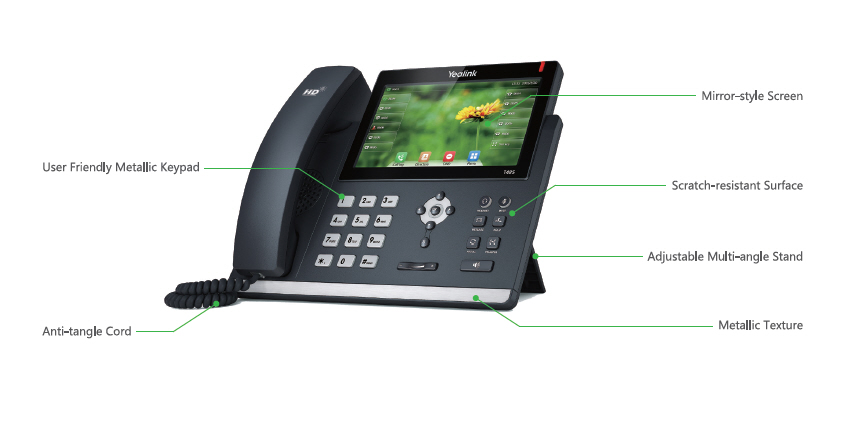Introduction
In the realm of modern communication, Voice over Internet Protocol (VoIP) technologies have transformed the way we connect. The beauty of VoIP lies not just in its ability to facilitate calls over the internet but also in the myriad features it offers, enhancing our calling experience beyond traditional telephony. From voicemail to video conferencing, these features have become integral to personal and professional interactions alike.
This article delves into the intricate workings of VoIP technologies, exploring everything from basic functionalities to advanced features that make VoIP phone systems a preferred choice for many. Additionally, we will address common questions surrounding VoIP and provide insights into how these technologies are shaping the future of communication.
What is a VoIP Phone System?
A VoIP phone system allows users to make voice calls using an internet connection instead of traditional telephone lines. It converts voice signals into digital data packets, which are then transmitted over the internet. This technology has made communication more flexible and cost-effective.
How Does a VoIP Phone System Work?
The process begins when you speak into a VoIP phone or application. Your voice is converted into digital data through an https://soundcurve.com/voip-phone-service-encino-ca/ analog-to-digital converter (ADC). This data is then compressed and sent over the internet. Upon reaching its destination, another ADC converts it back into audible sound.

Key Components of a VoIP Phone System:
- VoIP Phones: Specialized devices designed for VoIP calls. Analog Telephone Adapter (ATA): Converts traditional phone signals to digital data. Session Initiation Protocol (SIP): A signaling protocol used for initiating and managing voice calls. Voice Gateway: Connects a VoIP network to traditional telephony networks.
The Evolution of VoIP Technologies
Historically, telecommunication relied on circuit-switched networks. However, with advancements in technology, particularly the internet, VoIP emerged as a dominant force in telecommunications.
From Landlines to IP Networks
Initially developed in the 1990s, early VoIP systems faced challenges such as latency and poor call quality. But as bandwidth expanded and codecs improved, these barriers diminished.
Milestones in VoIP Development:
1995: The introduction of Internet Phone by VocalTec. 2004: Widespread adoption begins with companies like Skype. 2010 onwards: Integration with mobile devices becomes commonplace.Core Features of VoIP Phone Systems
VoIP has revolutionized calling features that were once considered premium in traditional systems. Here are some essential features:
Call Forwarding and Call Waiting
These features allow users to manage incoming calls efficiently without missing important communications.
Voicemail Transcription
With voicemail transcription services, users receive text versions of their voicemails via email or SMS.
Conference Calling
VoIP systems enable seamless conference calling with multiple participants at little to no extra cost.
Auto-attendant Services
An automated system that greets callers and directs them to the appropriate department without human intervention enhances customer service efficiency.
Advanced Calling Features in VoIP Technologies Explained: What’s Behind Your Favorite Calling Features?
As technology advances, so do the capabilities of VoIP systems. Let’s explore some advanced features that users often appreciate:
Video Conferencing Capabilities
Video conferencing has surged in popularity due to remote work trends and global connectivity.
Benefits of Video Conferencing:
- Enhances collaboration across teams. Reduces travel costs significantly. Facilitates face-to-face interaction regardless of location.
Integration with CRM Software
Many businesses leverage integrations between their VoIP systems and Customer Relationship Management (CRM) software for improved customer interactions and data management.
Mobile Application Access
With mobile applications tied to your VoIP phone system, making calls from anywhere has never been easier.
The Cost Benefits of Using a VoIP Phone System
One notable advantage of adopting a VoIP phone system is cost savings compared to traditional telephony options.
Lower Call Rates
VoIP offers significantly reduced rates for both local and long-distance calls due to its reliance on internet infrastructure rather than conventional phone lines.
Reduced Infrastructure Costs
Businesses can save on hardware investments by utilizing existing internet connections rather than requiring extensive cabling or installations associated with landlines.
Setting Up Your Own VoIP Phone System at Home or Office
If you're considering transitioning to a VoIP phone system, here's how you can set one up seamlessly:
1. Choose Your Provider
Research various providers based on pricing plans, features offered, customer support quality, etc., before making your decision.
2. Assess Your Bandwidth Needs
Evaluate your internet connection's bandwidth capacity; this will determine how many simultaneous calls your system can handle effectively without compromising quality.
3. Gather Necessary Equipment
Acquire either dedicated IP phones or ATAs if you wish to use traditional phones alongside your new setup.
FAQs About "VoIP Technologies Explained: What’s Behind Your Favorite Calling Features?"
What is the primary advantage of using a VoIP phone system?
The key advantage is cost savings; businesses can significantly reduce their communication expenses while enjoying advanced features that enhance productivity.
Can I use my existing phones with a new VoIP service?
Yes! With an Analog Telephone Adapter (ATA), you can convert standard phones for use with your new system easily.
Is there any downtime during switching from traditional lines to VoIP?
Generally not; most providers facilitate seamless transitions without interruptions during installation processes.
Are international calls cheaper with a VoIP service?
Absolutely! International calling rates through many providers tend to be substantially lower than those offered by traditional carriers.

What happens if my internet goes down?

If your internet connection fails while using a cloud-based service provider for voice calls—calls will also fail unless you have backup solutions like cellular integration enabled beforehand!
Can I keep my existing phone number when switching?
Yes! Most reputable providers offer number porting services allowing you smoothly transition your current numbers without hassle!
Conclusion
In summary, understanding how “VoIP Technologies Explained: What’s Behind Your Favorite Calling Features?” unveils layers upon layers of innovation within modern communication systems today! The transition from traditional telephony towards integrated solutions shows us where we’re heading—toward greater connectivity at lower costs—making it easier than ever before for individuals & organizations alike stay connected anytime they need too!
Embracing these innovative technologies means harnessing their full potential—saving money while reaping benefits across both personal & professional realms alike! As this landscape continues evolving rapidly—keeping abreast changes will ensure everyone enjoys enhanced experiences every time they pick up their device call away!